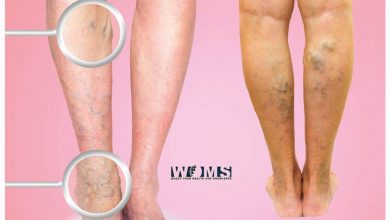Knee Pain: Causes, Symptoms, And Treatment

As the largest joint in the human body, the knee shoulders plenty of weight. It’s responsible for carrying your weight when you walk, run, or jump, made possible by its network of ligaments and tendons. Every kilogram of body weight translates to two to three kilograms that the knee has to bear.
These forces, coupled with complex anatomy, make the knee suffer a lot from wear and tear. If your knee’s giving you a miserable time, you can’t move far, if at all. It means there’s not much preventing two of the longest bones in the body the femur and the tibia from rubbing their ends against each other. It’s like two metal parts moving without lubricant.
With that said, it’s imperative to be aware of what knee pain may signify. Here’s an in-depth look at its causes, symptoms, and ways for treatment.
The Cause Of The Pain
With many parts, the knee can also suffer from just as many problems. It only takes one failing part to hamper your mobility severely, if not render you immobile. The standard physio Brisbane patients receive has to deal with the same knee pain but different causes. Even long after the pain’s gone, physio continues to make sure it doesn’t happen again.
Common causes of knee pain can fall under one of four classifications.
- Injuries involve the usual wear and tear of ligaments and tendons and also inflammation. Examples are anterior cruciate ligament (ACL) injury, torn meniscus, and knee bursitis.
- Mechanical problems refer to any changes in the position and integrity of the knee’s parts. They may include dislocated patella, tightening iliotibial band, and loose bone or cartilage.
- Of over the hundred known types of arthritis, the ones affecting the knee include gout and osteoarthritis. Variants like rheumatoid arthritis and pseudogout also exist.
- Due to its broadness, patellofemoral pain syndrome often warrants its own classification. As it’s more prevalent among athletes, it’s also called runner’s knee or jumper’s knee.
For the record, the knee is a hardy joint given its place in the body. Yet it can only handle so much abuse. The following risk factors can aggravate the damage:
- Overweight/obesity – Weight gain through an unhealthy diet can exert unnecessary strain on the knees, more so when in motion.
- Muscle wasting – As the knee’s ligaments and tendons are muscles, any wasting can impact its strength and integrity under stress.
- Knee-unfriendly sports – Physical activities that involve a lot of running and jumping can put plenty of strain on the knees (e.g., ball sports, skiing).
- Previous knee injury – In spite of thorough treatment, there’s still a possibility that the knee injury you had can act up again.
Understanding the root cause of your knee pain is the first step in managing it. The longer the pain persists, the worse its effects on the body get. For instance, if you don’t stay active because of your aching knee, the ligaments and tendons will keep losing their mass until they can no longer support the knee effectively.
What To Be Aware of
Fortunately, knee pain can be obvious. The slightest tinge of pain and discomfort is enough of a red alert. The only issue is how you choose to treat that sign.
Knee pain symptoms can either be typical or deadly, depending on the extent of the damage. Some general symptoms include:
- Swelling in and around the knee area
- Popping noise when stretching or moving
- Limited mobility and carrying capability
- Inability to stretch your leg without feeling pain
- Visible deformity in the knee or leg
- Knee giving out even when doing a simple activity
While rare, knee pain can point to a life-threatening condition based on the following symptoms:
- Shortness of breath – Some causes of knee pain, such as rheumatoid arthritis, are known to scar the lungs, making breathing difficult.
- Numb or weak legs – might point to vascular problems, primarily peripheral artery disease (PAD), as the legs aren’t getting enough oxygenated blood.
- Leg colour change – usually a sign of ongoing cell death called necrosis which can lead to gangrene and forced amputation; also a symptom of prolonged PAD.
- Sudden wounds – Knee pain accompanied by wounds popping out of nowhere can signify a severe underlying condition.
Whether or not a symptom is life-threatening, knee pain is nothing to dismiss too quickly. If you’ve experienced these symptoms for a while, don’t hesitate to visit your physician. These days, there’s no shortage of ways to mitigate the discomfort and even eliminate it.
Your Options
Before thinking about getting knee surgery, it’s important to remember that most knee pain cases can be resolved with medicine, a knee pain patch, or home remedies. Always start with what you can do first, namely the RICE method.
Known as “Rest, Ice, Compression, and Elevation,” RICE consists of four steps you can perform at home. To break it down:
- Rest your aching knee for two days; refrain from doing anything that can strain it.
- Apply ice to the knee during this period, preferably for 20 minutes every 3 hours.
- Use a medical bandage to apply compression but not too tightly that it hinders blood flow.
- Elevate the knee above heart level by putting some pillows under it.

A doctor may prescribe medication while performing RICE, mainly painkillers like ibuprofen or non-steroidal anti-inflammatory drugs (NSAID). While these greatly help, their high potency can lead to complications if used too much.
The painkillers may also interfere with other medicines that you’re currently taking, so make sure that the doctor is aware of what medicines you’re taking.
If home remedies don’t work, and you want to avoid any serious medications, trying regenerative medicine is advisable.
If neither home remedies, regenerative medicine nor medication works, treatment may be elevated to injectable drugs like corticosteroids, hyaluronic acid, and platelet-rich plasma. These drugs are administered directly to the affected knee for faster effect.
Surgery and physiotherapy are generally reserved for the more acute cases, starting with minimally invasive procedures like arthroscopic surgery. If the knee is beyond saving, the doctor may resort to partial or total replacement with an artificial knee joint. However, this procedure won’t exactly come cheap.
Read also: Pain Behind Knee
Conclusion
Taking care of your knees should be high above your list of health priorities. Coping with pain can be difficult, but dealing with a knee lost to disease can be next to impossible. Treat your knee the same way you’d treat other parts of your body: Mitigate pain and consult a doctor when it starts getting worse.




